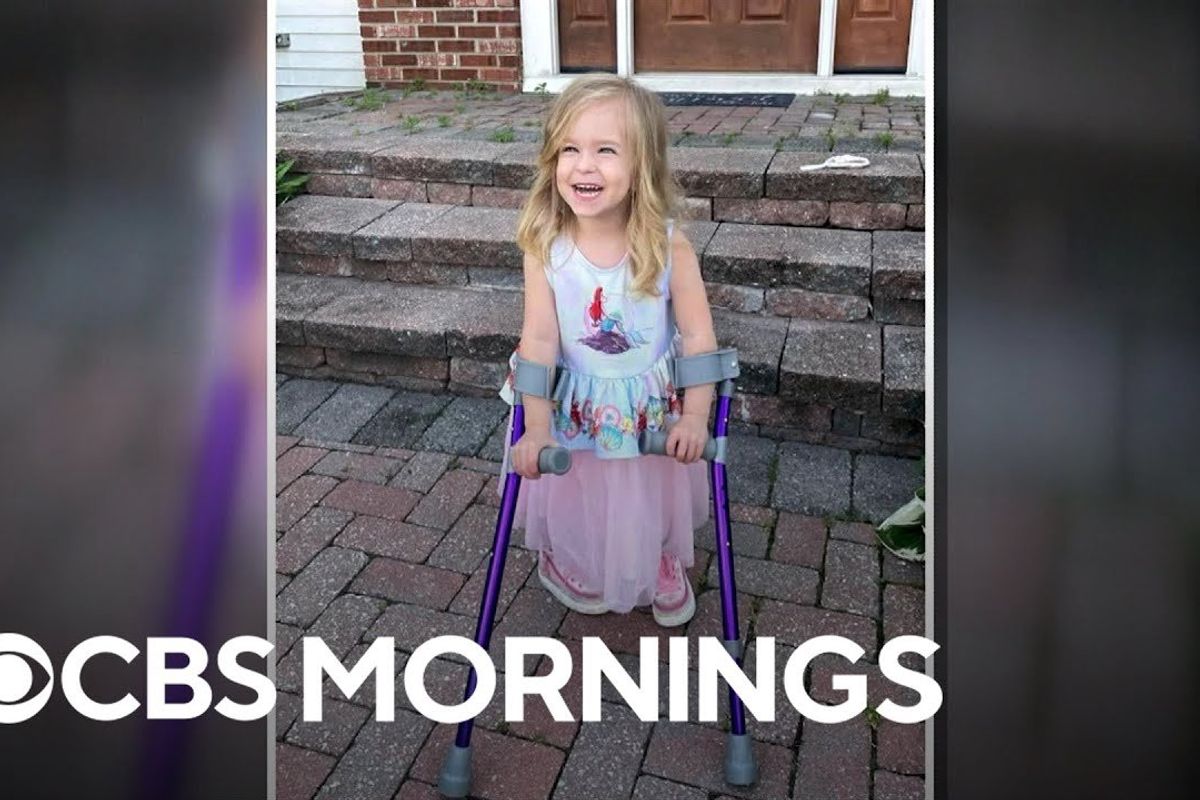Fitness coach and child with cerebral palsy inspire each other through long-distance mentorship
"I want Colbie to know that she can pick up the phone and call me for whatever reason."
Fitness coach and child with cerebral palsy inspire each other.
Everybody needs someone who can relate to them; it's one of the things that connects the human experience. For a 5-year-old New Jersey girl named Colbie Durborow, that connection came just in time. Colbie has been noticing people staring at her lately as she gets around using leg braces, a walker and sometimes a wheelchair, and she told her mom that she doesn't like it when people stare.
"She said, 'Mommy I don't like when people stare at me. Mommy, I don't like it, I want them to stop,'" Colbie's mom, Amanda Durborow, told CBS Mornings.
Colbie was born 17 weeks early and has cerebral palsy (CP), a group of disorders that affect balance, mobility and posture, according to the Centers for Disease Control and Prevention. Her mom connected with former CrossFit trainer Steph Roach on Instagram, and the two became friends.
Roach also has CP and uses a wheelchair, but she defied the expectations of others by becoming a fitness coach, CrossFit instructor and author.
"When I saw Colbie and I saw the way that Amanda was guiding Colbie through life, it was just like we were meant to be friends," Roach explained to CBS Mornings.
The two women and Colbie got to know each other online, and before long, Roach was acting as a mentor for the little girl. They were all finally able to meet in January, and the author got to teach Colbie how to navigate some uncomfortable situations.
"Colbie realizes that people are starting to look at her and see her maybe a little bit differently, so we've had some big conversations about how that might make her feel," Roach said.
She went on to encourage the little girl that it's OK to tell people that she doesn't like it when they stare and to offer to answer questions people may have. The exchange was very sweet. Roach later admitted that she thought that Colbie could do anything, and said through tears that if she could go back to her 5-year-old self, she would tell her to be proud of herself.
It's clear that these two have developed a special bond through their connection with CP. Thanks to having Roach in her life, Colbie is learning that she can do things that exceed expectations. You can watch their adorable bond below:

